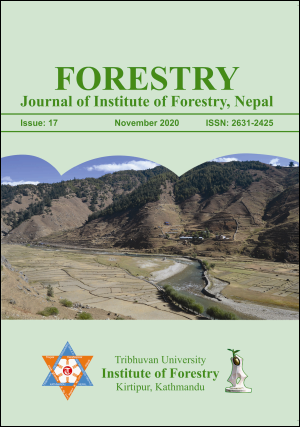An Assessment of Forest Product Harvesting in Community Forests: A Case from Community Forest of Mid-hills, Nepal
DOI:
https://doi.org/10.3126/forestry.v17i0.33636Keywords:
harvesting, community forest, forest products, operational plan, traditional methodsAbstract
Proper harvesting of forest products is crucial for sustainable management but due to low level of skill in and awareness of harvesting, forest is deteriorating and harvesting forest products is wasteful. As harvesting is one of the important factors in minimizing waste and damage and achieving forest sustainability, this study was essential. This case from community forest (CF) of mid-hills region demonstrated the status of existing harvesting practices, tools and techniques used and recommended appropriate mechanism for improving such practices. Semi-structured questionnaire survey was performed with 40% of the total households, five key informant interviews and field observations during the harvesting process at the study site for gathering data. Data were analyzed using descriptive statistics and presented in charts and tables. The study revealed the use of traditional harvesting methods and conventional tools like sickle, bill-hook, and axe but limited use of modern tools. Deviation from the operation plan during block selection and harvesting of trees were observed. Appropriate tools and training to users along with regular monitoring by forest officials are needed. This study will help policy makers, planners and forest officials to make necessary provisions for improving harvesting practice in community forests of Nepal.
Downloads
Downloads
Published
How to Cite
Issue
Section
License
© Tribhuvan University, Institute of Forestry




